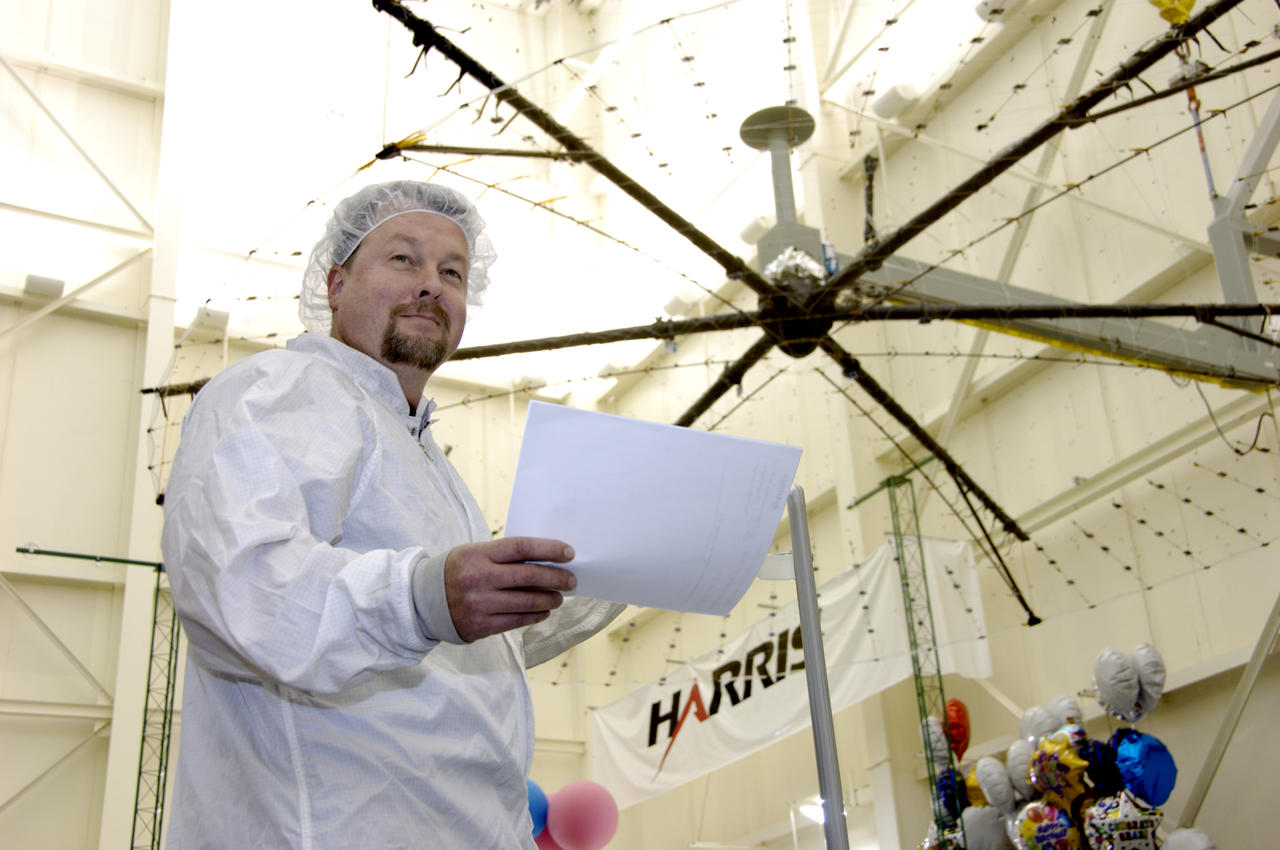Latest News
Via Satellite’s Tech Focus Report: 100th Unfurlable Mesh Reflector Marks Industry Milestone
Inside the massive high-bay building that houses Harris’ space reflector production facilities, workers have been meticulously calibrating, testing, and making adjustments to a very special upcoming deliverable: Harris’ 100th unfurlable mesh reflector.
technology.”
With an anticipated launch in 2022, Harris’ 100th unfurlable mesh reflector will spend the next five years in sun-synchronous orbit as part of a mission to collect the most accurate global maps of forest biomass to date. “This kind of data is very limited in many parts of the world, yet it’s essential to understanding how things like land-use change and the burning of fossil fuel impact Earth,” explains Campbell. “Our reflector will support a P-band synthetic aperture radar payload in piercing through dense forest canopies and enable data collection that will help scientists understand the carbon cycle and its impact on Earth’s climate.”
Unmatched On-Orbit Success, Design Options
Forty years ago, the satellite business was heating up, and Harris was developing the mesh antenna technology that would lead the company to provide the reflectors that supported the United States’ first Tracking and Data Relay Satellite System. One hundred unfurlable reflectors later, Harris records the highest number of successful on-orbit deployments of mesh reflectors in the industry.
“Harris is known for solving really hard problems,” says Phil Henderson, advanced programs engineer for Harris Space Antennas and Structures. “We build the most accurate unfurlable mesh reflectors in the world. We have a variety of solutions for our customers’ problems—one of our primary strengths is the number and type of structures and antennas we have developed over the years.”
In addition, the company actively manages its supply chain base to ensure on-time delivery. A good example of that is the company’s mesh technology. The unique mesh material on Harris reflectors is one of the key reasons for their high performance and overall success. “The evolution of [our] mesh design has occurred over the entire time we’ve been in business and continues today,” Henderson says, adding that by knitting the mesh in house, Harris is able to precisely control the production process. This enables the company to quickly address contract needs as well as expedite research and development activities when inventing new mesh.

Harris has also taken unfurlable reflector technology to new and higher frequencies, introducing the first unfurlable, high frequency Ka-band space antenna and increasing performance in bands that range from UHF to V band.

Continuous Innovation
Harris’ Fixed Mesh Reflector (FMR) supports high-frequency applications and is a low-weight alternative to large conventional solid reflectors. FMRs are the first mesh reflector with high performance (reflectivity) through 50 GHz. Today, Harris continues to provide scalable mesh reflector solutions with its next-generation design, the Perimeter Truss Reflector, which s scalable from 3 meters to 22 meters. The Ka-band Perimeter Truss Reflector supports the most technically challenging communication and science missions. Harris also introduced the High Compaction Ratio (HCR) reflector. Operating in X through Ka band, HCR is a high-accuracy, large-aperture antenna optimized for smallsats. The HCR reflector antenna with 1-meter reflector and feed fits in a 2U volume. A 5-meter version fits in less than a quarter of an ESPA-sized satellite, which is approximately the proportion of a dorm-room refrigerator.

As more customers look for cost-effective ways to launch space missions while reducing risk and schedules, Harris offers the largest collection of “build to print” options. By leveraging foundational designs of Harris’ proven architectures, the company minimizes design costs, lowers risk, and accommodates fast turnaround production schedules.
“Customer challenges have changed over the years,” says Henderson. “They’d like larger and larger sizes. They’d like to go to higher and higher frequencies for better data rate. They’d like smaller and smaller packages for launch volume, and a variety of other parameters, including reducing the cost. Those desires are what’s been driving our evolution of design and will continue to do so long into the future.”
Get the latest Via Satellite news!
Subscribe Now